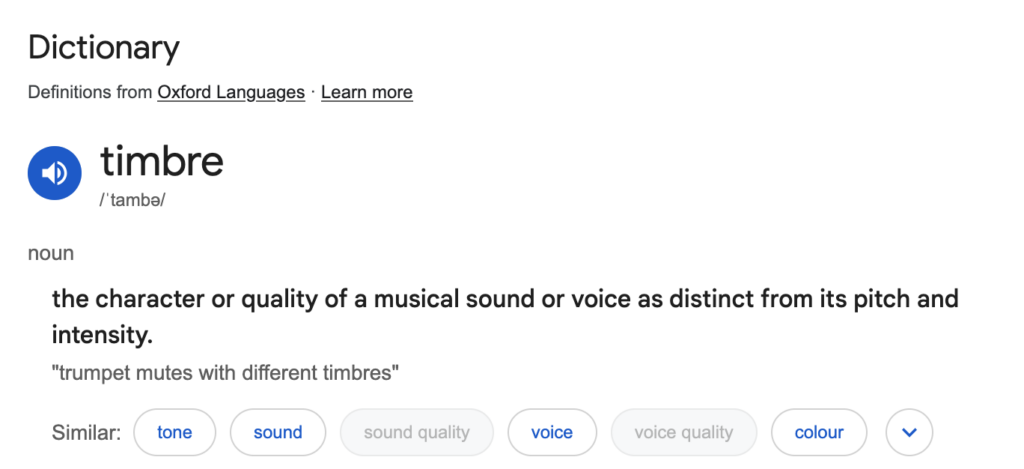
Timbre is a fascinating concept. It is the “quality” of a sound, distinct from its pitch or loudness.
You can’t measure it in a linear way like pitch or loudness. You can’t say, make this piano note two tims more guitar-like. Sound quality is more like a 360 degree spectrum.
Timbre is the “guitarness” of a guitar note.
Or the “pianoness” of a piano note.
And so on. In Western Music the focus has been on pitch: melody and harmony. And a little bit of rhythm!
In other cultures the focus has been more on timbre and rhythm, say for example didgeridoo music from the Aboriginal people of Australia, or West African drum music. This is one of the things that infused jazz and blues with a totally different sound and vibe; in New Orleans at the beginning of the 20th Century, musicians from different cultures were trained on brass band instruments but instead of playing the music exactly as it was written by European composers, they improvised, creating new sounds, with growls and different kinds of timbres.
Same with the singers; European styles of singing looked up to voices that were “pure” and “clear” and on pitch. In Blues music, singers used all kinds of different timbres and weren’t so focused on the pitch, rather the sound quality.
Interestingly, in electronic music there is a strong focus on timbre and rhythm. Especially in Acid Tracks like “untitled” from Surfing on Sinewaves or “Didgeridoo” by Aphex Twin, or the classic Phuture Acid Tracks, or Woody MacBride “Basketball Heroes” (youtube vids are below) – all these tracks feature these squidgy, one-note-motifs, or a very small number of notes. The interest in the track is created by the filtering, in other words the changing of the timbre, of the main bass sound.
Electronic Music is a very wide and diverse field of music and there are also plenty of great examples of tracks with chord sequences, melodies and harmonies.
If you are a musicmaker who is solely focused on making music based on timbre and rhythm, then you probably don’t need to know too much music theory.
But for anyone with an interest in creating notes, melodies and chord sequences, unless you have amazing ears which can tell you what notes to use, understanding of music theory is extremely useful.
I’m creating a course right now with 7 modules on Intervals, Chords, Scales, Keys, Melody Writing, Rhythm and Timbre, and you can get it at a special prelaunch offer price here:
https://courses.zoid.ie/music-theory-level-1

